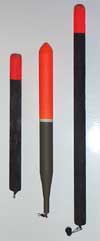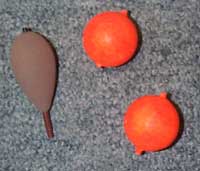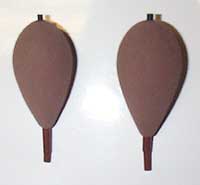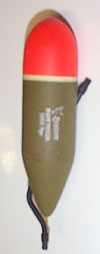| TACKLE REQUIREMENTS CONTINUED Carrying on from my previous article, here I will cover the main items of terminal tackle that I use for all my pike fishing. For the articles preceding this one click the links below. HOOKS Again the blindingly obvious requirement here is for strength and reliability. The last thing you want when you get your first run of the season on the water you are targeting is a straightened or snapped hook. Once you find one that doesn’t let you down stick with it. I use a combination of three hooks. Drennan flanked treble – this has two large (barbless) hooks and one small barbed hook, the latter being ideal for nicking into baits that only require an underarm cast. Particularly good for use on tough baits like mackerel and eel section Drennan extra strong treble – a superb all round hook and one that I now use for around 80% of my pike fishing. This is a standard treble hook design with three equally sized hooks all of which are come barbed. I crush down the barbs of two of these completely and the third barb partially, it is the latter which is then used to hook the bait. Eagle Claw trebles – another good all round hook with a slightly thicker gauge than the Drennan model. This pattern I tend to use in the larger sizes on lures or when trolling baits. This also comes fully barbed and these are crushed in the same manner as those above. (Footnote: since writing this article I have had a size 6 Eagle Claw hook straighten on a low double whilst fishing sink and draw style with braid. Although this could well have been a ‘one-off’ confidence is everything and I now only use these hooks on the very large sizes as replacement trebles on lures. In these large sizes I have accidentally hooked and lifted anchor chains so I’m totally confident in using them for my heavy lure fishing, but not for bait fishing). TYING TRACES I now prefer to ‘spin’ my traces using a set of forceps. I have tried both ‘twiddling’ and ‘crimping’ traces but as I tend to tie up traces quite regularly to fit my bait I find that ‘spinning’ a trace is much faster than the other methods. As I have never had a trace part on the joint on the trace ‘unwind’ I am 100% confident in this method of trace production, so again will continue to use this method. Finally and most importantly, for ALL my bait fishing my hooks are semi- barbless. I know I went into this subject in the first of these articles and again above but I make no excuse for raising this again. If your trebles are barbed you should crush at least two of the hooks on each treble, leaving just the one that will be holding the bait. With a fully barbed treble hook a fish hooked in the throat can be easily stitched up and will present a real unhooking problem, even to a very experienced angler. Just try to image how you will feel if the thrill of catching the fish of a lifetime is extinguished when you can’t retrieve your hooks without damaging the fish and that magnificent creature once returned, goes belly up………….think about it ! THERE IS SIMPLY NO PLACE FOR BARBED HOOKS WHEN BAIT FISHING FOR PIKE.
Things have changed quite dramatically in float designs for pike fishing but I now tend to use four types of float which pretty much covers all situations. These are as follows: Pencil floats – These are available in either standard or self cocking versions and I tend to use these for all my float fishing from the bank. When casting moderate to large distances I use the unweighted version using the weight of the bait (if large) to cock the float by fishing the float set slightly overdepth and winding down until the float ‘half cocks’. When using smaller baits I adopt the same presentation but use 3 or 4 swan shot on the trace to enable me to wind down to get the float to sit upright in the water. A lot of people when float fishing prefer not to use an alarm and claim to watch the floats for indication. I personally cannot see how you can do this effectively when fishing with two or even three rods and prefer to use them in conjunction with a lightly set drop off and a bit alarm on the front rod rest. Although I still watch the floats for signs of a bite the audible alarm provides an early indication should you receive a pick up when your attention is elsewhere.
Poly balls – These I make myself by buying polystyrene balls from model shops, Araldite is used to secure a tube through the centre before the whole ball is painted bright orange (I cannot see the advantage of painting it half orange half green as the shop bought versions generally are). These I use for my livebaiting and for deadbaiting when boat fishing. The reason for this is the constant swaying of an anchored boat means you cannon set an unweighted pencil float correctly, whereas the polyballs remain highly visible, riding the waves as well as the boats slight movements. By fishing with a drilled bullet or a series of swan shot which has a weight sufficient to hold bottom but not to heavy to sink the float, you can quickly change from a bottom fished deadbait to a free roaming livebait or suspended deadbait by simply moving the stopknot to the required depth.
MISCELLANEOUS GEAR Bite indicators – I prefer to use a ‘drop off’ type indicator in conjunction with a front rest bite alarm such as an optonic or Fox micron. The rear alarms which incorporate a drop off are fine but I much prefer the former arrangement as, set up correctly this will pick up the smallest indications. A single bleep usually enough to have me stood over the rod, line out of the clip and awaiting any development. It is important that the indicator has enough inherent weight within its body to be able to signal a drop back bite. If the drop back indicator you use is one of the ‘pin pong’ ball or hollow type containing little natural mass I would suggest you attach a snap link to the bobbin to allow the fixing of additional weight, this is vitally important, especially when freelining to ensure you receive an indication as soon as a pike mouths the bait. A light bobbin fished with heavy mainline at distance is a recipe for deep hooking – don’t do it ! Weights – A selection of lead weights in the 1 – 4oz range will cover every eventuality. These will be used when ledgering or paternostering baits. A box or two of swan shot is also invaluable for adding weight to lighter baits that you cannot freeline at distance. Along with all the above, power gum, rig tubing, beads, swivels, an old or cheap spool of 6lb mono and a freezer box will be all that you will need to cover 95% of your pike fishing. In the next article in this series I will cover the actual methods used and in which circumstances they would be best employed. |
Welcome!Log into your account














